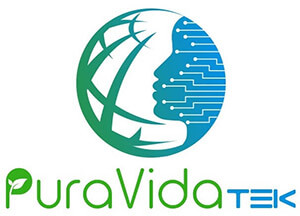The latest version of Microsoft Dynamics AX is here and along with a whole new user experience and Azure-native architecture; Microsoft has changed the game of the naming convention. Dynamics AX is now a cloud first application which means it will no longer have an associated version number. The application will be updated and maintained continuously, without the need for companywide downtime for cumulative updates, or waiting out the next version before upgrading to the latest features.
This is where the new ‘Cloud first, mobile first’ mantra comes in to play. ‘Cloud first’ in Dynamics AX translates to a new cloud-optimized platform for both public and private deployments, but with an on-premises option too. ‘Mobile first’ means Microsoft believes that productivity is about empowering people and not simply enacting artificial technological walls that force people to work in predefined ways. Integrations between non-Microsoft products and devices will ensure there are no differences in a user’s experience based on the mobile device they use, be it an iPhone, iPad, Android, or other types of devices.
Access Dynamics AX Anywhere
This giant leap forward in cloud and mobility impacts accessibility, scalability, and overall usability of the application in general. Dynamics AX can now be deployed on nearly any device with an internet connection. It runs natively on Azure so customers can take advantage of its scalability options, choosing to either ramp up or ramp down their hardware. And the new, intuitive HTML interface and workspaces are designed to increase operational efficiency and promote user productivity.
Highlights of Dynamics AX 2016 (or Dynamics AX 7)
There are new features and functions designed to further improve the work of end-users, better development tools, and better metrics for management.
Key areas of improvement of Microsoft Dynamics AX in 2016 include:
- New Generation User Experience: An intuitive, context-sensitive Windows 8 experience based on HTML5 technology represents a movement away from boring and bland ERP system interfaces towards a modern user experience that is light, web-oriented, and intuitive. The new interface makes it easier to share and collaborate with others. And with everything now available through a browser, you eliminate the need to install and manage other clients, applications or terminal servers to extend access outside of your walls.
- Cloud Delivered: Focus on what you need, when you need it through Windows Azure and Windows Server. Azure deployment is impressive, with a full cloud environment installation taking only 60-90 minutes. For disaster recovery and development testing alone this is a major feature, let alone the simplification of production environments and reduction of backup servers. This also enables scaling based on need, meaning you don’t pay for what you’re not using and adding or removing users is simple and immediate.
- Better Intelligence: Seamless integration with PowerBI, CRM and Office 365, as well as the power of Azure Machine Learning and Cortana, means you can leverage the rich data and insights in your system to make more actionable and accurate decisions.
- Productive and Personalized Workspaces: For current Dynamics AX users, role centers are being replaced with Workspaces. Workspaces provide a single view of a specific job activity where you can drill down deeper into a task. This feature enables users to focus on completing an action with all the supporting actions on the same screen – customizing your experience and improving your efficiency.
- Fast Deployment with Lifecycle Management: Lifecycle Services (LCS) helps in the implementation and roll out of Dynamics AX irrespective of the deployment choice: cloud, on-premise, or hybrid. Microsoft has invested heavily in this area, with built-in tools that will enhance the efficiency and shorten the time with their system guided procedures and controls. The main advantage of LCS lies in it scalability to manage the entire lifecycle of AX 7, from conference room pilot, through go-live, and on to post-implementation support by using RCS.
- Visual Studio and .NET Framework: The development environment has moved to Visual Studio under the .NET framework, which increases the consistency, experience, and availability of development tools.
